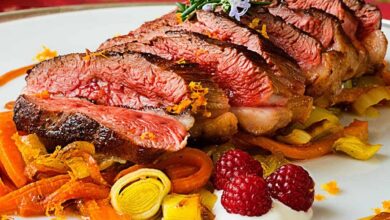It has the alcohol as many calories as it is supposed

Does alcohol make you fat? This is a very common question among users. Everyone has heard the expression “beer belly” and it is common to eliminate alcohol from all diets when looking to lose weight. In this article, we will review the main alcoholic beverages and their caloric content, to try to answer this question.
Alcoholic beverages form a somewhat special group of foods in terms of calories, since they break the usual norm when it comes to counting the calories they provide. In general, one gram of alcohol provides about 7 kcal, so it is a food group with a high caloric intake, if we take into account that proteins and carbohydrates provide about 4 kcal per gram. Although they are still below the fats, which provide about 9 kcal per gram.
Alcoholic beverages have the particularity that to count their calories, it is necessary to multiply the amount of alcohol in grams by the calories that each gram provides. This can be done by looking at the alcohol content of each drink. The problem when making this calculation is that alcohol is presented by volume and not by weight. For example, in 100 parts (assuming 100 ml) of whiskey, you will usually find 40 parts of alcohol (40 ml). Therefore, to calculate the weight, its volume must be multiplied by the density of the alcohol, which is usually 0.80 g/ml.

Thus, to calculate the calories in 100 ml of whiskey at 40º alcohol, the first thing to do is calculate how many grams that alcohol weighs, to do so it is necessary to perform the following operation:
40ml x 0.80g/ml= 32g
Once the weight of the alcohol contained in 100 ml of whiskey is known, this weight must be multiplied by the amount of calories provided by each gram as follows:
32 g x 7 kcal/g = 224 kcal
Thus, whiskey has more calories than other drinks such as wine, beer or cider, which do not exceed 80 kcal/g. If you are wondering which whiskey to buy (here you can find some options to choose from) so as not to gain weight, the answer will be: the one with the lowest alcohol content.
In a slightly longer comparison, these are the 5 drinks with the fewest calories:
Beer : Beer has approximately 43 calories per 100 ml. Although it has a low caloric content, it is a drink that is usually consumed in larger quantities, so it can end up making you more fat than other alcoholic beverages with a higher alcohol content. Also, it contains gas, which helps you feel bloated. Despite this, it has been shown through several studies that it does not make you fat, since it only accounts for 4% of the total calories in the diet of men and 3% in that of women.
Wine : When talking about the calories in wine, it is necessary to differentiate between red wine and white wine. Red wine contains about 85 calories, while white has 80, although the difference is almost non-existent, white wine is less caloric than red. Wine also has other beneficial effects for the body such as antioxidant and cardioprotective properties.
Vermouth : Vermouth is the classic drink that we have seen our grandparents enjoy at mid-morning, with a good plate of chips. It is a derivative of wine that, due to its herbal preparation, contains 130 calories per 100 ml, slightly higher than beer or wine. Nowadays, it has regained some of its popularity among young people, as it is a perfect drink for the afternoon, without gas and without as much alcohol as gin mixed drinks.

Cava : Cava is a product that is made from wine, so it also has a very low calorie content. Specifically, in 100 ml of cava we only find 75 calories. Although in the case of cava, this number may depend on the sugar content of the specific variety. In this sense, Brut cava is the one with the fewest calories, while sweets will have more calories.
Cider : Along with beer, it is the least caloric drink, since it only has 49 calories per 100 grams. This drink is made from fermented apples and contains a little gas, produced naturally by fermentation. It pairs very well with some foods and is very refreshing, as well as having antioxidant properties.
The most common problem that usually appears when controlling the calories ingested in this way is that these drinks with less graduation are usually taken in larger quantities. For example, a standard serving of beer, which could be a third bottle, is 330 ml, while the glass of whiskey is always between 30 ml in the shot and 70 ml in the glass.
Some drinks such as beer, in addition to alcohol, provide other sources of calories, in this case carbohydrates and proteins. In the case of sweet liqueurs such as anise or fruit liqueurs, they contain a large amount of sugar, which will greatly increase the calorie consumption in each glass.
In addition, it must be taken into account that, although these alcoholic beverages have few calories, they are empty calories, since they do not contribute anything to the body. Unlike the calories that are ingested with carbohydrates or proteins, these calories are not transformed into energy, they are not macronutrients and, therefore, they only accumulate. In addition, alcohol abuse can be a source of very serious health problems and disorders. According to data from the WHO (World Health Organization), alcohol kills more than 3 million people a year.



